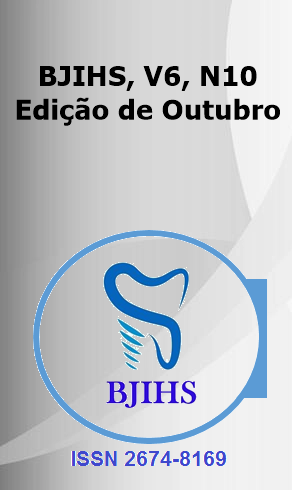Abstract
Attention Deficit Hyperactivity Disorder (ADHD) is a neurodevelopmental disorder that affects cognitive and behavioral functions, impacting the academic, professional, and social life of those who have it. The main characteristics include inattention, marked by difficulty focusing on tasks, forgetting commitments, and making errors due to distraction; hyperactivity, characterized by fidgeting behaviors, difficulty staying still, and physical and mental restlessness; and impulsivity, expressed in thoughtless actions, difficulty waiting one's turn, and interrupting conversations or activities. ADHD can manifest in three forms: predominantly inattentive, predominantly hyperactive/impulsive, or in a combination of both types.
The causes of ADHD are multifactorial, involving genetic, environmental factors, and neurochemical changes, such as dysfunction in dopamine regulation, a neurotransmitter related to motivation and pleasure. The diagnosis is clinical, based on the observation of behavior over time and in different contexts, as well as the assessment of symptoms through the patient's history. There is no laboratory test that confirms the disorder.
The treatment of ADHD is multidisciplinary and may include medication, primarily with the use of psycho-stimulants such as methylphenidate and amphetamines, as well as psychotherapeutic interventions, such as cognitive-behavioral therapy (CBT), which helps manage symptoms, improve focus, organize activities, and control impulses. Additionally, lifestyle adjustments, such as establishing routines, engaging in physical exercise, and employing time management techniques, can be effective. Although there is no cure, appropriate treatment significantly improves the quality of life of patients.
References
AMERICAN PSYCHIATRIC ASSOCIATION et al. DSM-5: Manual diagnóstico e estatístico de transtornos mentais. Artmed Editora, 2014.
American Psychiatric Association. (2003). DSM-5-TR: Manual diagnóstico e estatístico de transtornos mentais (ed. rev.). Porto Alegre, RS: Artes Médicas.
AMERICAN PSYCHIATRIC ASSOCIATION. Diagnostic and Statistical Manual of Mental Disorders. Fourth edition. Washington (DC): American Psychiatric Association; 1994
ANDRADE CRM; SILVA WA; FILHO JFB; SILVEIRA JCC. Transtorno de déficit de atenção e hiperatividade (TDAH). Rev Med Minas Gerais 2011; 21(4): 455-464. Disponível em: http://rmmg.org/artigo/detalhes/165#:~:text=Artigos%20de%20Revis%C3%A3o&text =O%20transtorno%20de%20d%C3%A9ficit%20de,persistir%20at%C3%A9%20a%2 0vida%20adulta.. Acesso setembro de 2024.
BAUERMEISTER, José J. Hiperativo, impulso, distraído: Você me conhece?: guia para pais, professores e profissionais sobre o déficit de atenção. São Paulo: Elevação, 2009.
GREVET, Eugenio Horácio. ABREU, Paulo Belmont de. SHANSIS, Flávio. Proposta de uma abordagem psicoeducacional em grupos para pacientes adultos com Transtornos de Déficit de Atenção/Hiperatividade. 2003. Disponível em: . Acesso em: setembro de 2024.
NASCIMENTO, Maria Inês Corrêa. et al. Manual diagnóstico e estatístico de transtornos mentais. 5. Ed. DSM-5. Porto Alegre : Artmed, 2014.
ORTEGA, F. et al. A ritalina no Brasil: produções, discursos e práticas. 2010. Disponível em: http://www.scielo.br/pdf/icse/v14n34/aop1510.pdf Acesso em: setembro de 2024.
PARTEL. Cleide Heloísa. Universo TDAH. (2006). Disponível em: http://www.universotdah.com.br/ Acesso em setembro de 2024.
PEREIRA, Heloísa S. Pereira. ARAÚJO, Alexandra P. Q. C. MATTOS, Paulo. Transtorno do déficit de atenção e hiperatividade (TDAH):aspectos relacionados à comorbidade com distúrbios da atividade motora. Rev. Bras. Saúde Matern. Infant., Recife, 5 (4): 391-402, out. / dez., 2005.
SILVA, Ana Beatriz Barbosa. TDAH: desatenção, hiperatividade e impulsividade. Rio de janeiro: Objetiva, 2009.
SMITH, Corinne. Dificuldades de aprendizagem de A a Z. Porto Alegre: Artmed, 2010.

This work is licensed under a Creative Commons Attribution 4.0 International License.
Copyright (c) 2024 Lorena Rebouças da Silva , Beatriz Almeida Holanda, Yasmim de Araújo Pereira , Carlos Alberto Mendonça Filho, Poema da Cunha Melo Ramos Villarim , Miguel Costa Fortes Ferreira Antunes
